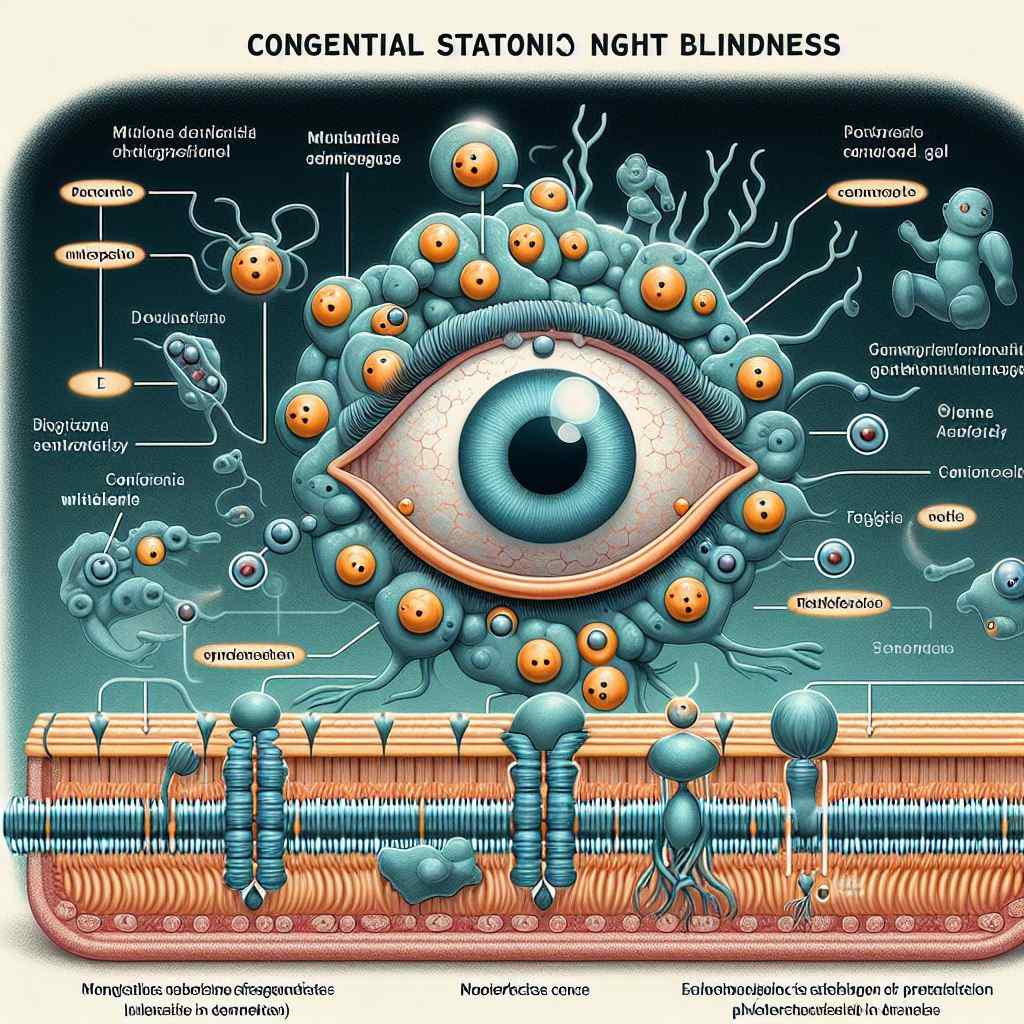
Shedding Light on Congenital Stationary Night Blindness: A Comprehensive Review
Congenital stationary night blindness (CSNB) is a rare inherited retinal disorder characterized by impaired night vision, reduced visual acuity, and abnormal electroretinogram (ERG) responses. This article delves into the complexities of CSNB, covering its etiology, clinical features, diagnostic criteria, management strategies, and emerging therapies.
Introduction: Congenital stationary night blindness (CSNB) encompasses a group of genetically heterogeneous retinal disorders characterized by impaired night vision and variable degrees of visual dysfunction under photopic conditions. Despite its rarity, CSNB presents significant diagnostic and management challenges due to its diverse clinical manifestations and genetic heterogeneity.
Etiology: CSNB is primarily caused by genetic mutations affecting the function of retinal photoreceptors or synaptic transmission between photoreceptors and bipolar cells. Inheritance patterns can be autosomal dominant, autosomal recessive, or X-linked, with mutations identified in genes encoding proteins involved in phototransduction (e.g., rhodopsin, GNAT1) or synaptic transmission (e.g., nyctalopin, CACNA1F).
Clinical Features: The hallmark clinical feature of CSNB is nyctalopia (night blindness), often noticed in early childhood. Patients may also exhibit reduced visual acuity, photophobia, nystagmus, and abnormal color vision. Fundoscopic examination typically reveals normal-appearing retinal architecture, although subtle abnormalities such as reduced rod function on ERG testing are diagnostic hallmarks.
Diagnostic Criteria: Diagnosis of CSNB relies on a combination of clinical evaluation, electrophysiological testing (e.g., ERG), and genetic analysis. ERG findings, including reduced or absent rod responses with preserved cone responses, are characteristic of CSNB. Genetic testing can confirm the underlying genetic mutation and aid in counseling and prognostication.
Management Strategies: Management of CSNB focuses on optimizing visual function, enhancing quality of life, and providing genetic counseling. While no curative treatment exists, supportive measures such as low-vision aids, visual rehabilitation, and environmental modifications can improve functional outcomes and alleviate symptoms. Genetic counseling is essential for affected individuals and their families to understand inheritance patterns, recurrence risks, and available reproductive options.
Emerging Therapies: Recent advancements in gene therapy hold promise for the treatment of inherited retinal disorders, including CSNB. Preclinical studies and ongoing clinical trials are exploring gene replacement therapy, gene editing techniques (e.g., CRISPR-Cas9), and optogenetic approaches to restore retinal function and improve visual outcomes in patients with CSNB.
Conclusion: In conclusion, congenital stationary night blindness (CSNB) represents a complex and heterogeneous group of inherited retinal disorders with diverse genetic etiologies and clinical manifestations. Early diagnosis, multidisciplinary management, and ongoing research efforts are essential in improving diagnostic accuracy, enhancing therapeutic interventions, and ultimately improving the visual prognosis for individuals affected by CSNB.
Links:


